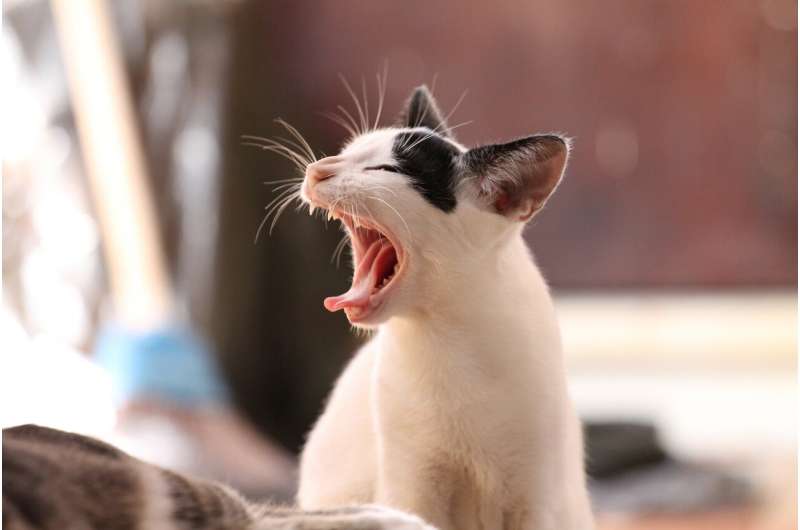Microbes make chemicals for scent marking in a cat

Domestic cats, like many other mammals, use smelly secretions from anal sacs to mark territory and communicate with other animals. A new study from the Genome Center at the University of California, Davis shows that many odiferous compounds from a male cat are actually made not by the cat, but by a community of bacteria living in the anal sacs. The work is published Sept. 13 in PLOS ONE.
"Cats use a lot of volatile chemicals for signaling, and they probably don't make them all," said David Coil, project scientist at the Genome Center and an author on the paper.
Many species—including cats, dogs, bears, pandas, skunks and hyenas—use anal sac secretions as a chemical language. Skunks, of course, also use them as a means of defense.
The experiment grew out of the KittyBiome Project started at the Genome Center by Holly Ganz, a postdoctoral researcher working with Coil and Jonathan Eisen, professor of evolution and ecology in the UC Davis College of Biological Sciences. The KittyBiome Project has since been spun off as AnimalBiome, a company with Ganz as CEO.
The researchers obtained anal sac secretions from a single male Bengal cat volunteered to participate by its owner. They extracted DNA for sequencing to identify types of bacteria, and also took samples for chemical odor analysis in Professor Cristina Davis' laboratory in the UC Davis Department of Mechanical and Aerospace Engineering.
Sequencing showed that the microbial community was not very diverse and dominated by a small number of bacterial genera.
"There are not a lot of players there," Coil said.
Analyzing volatile organics
The most abundant bacteria from the screen were grown in culture. Mei Yamaguchi, a postdoctoral researcher in Davis' lab, analyzed the volatile chemicals given off by the bacteria.
Davis' lab focuses on technology for detecting and characterizing low levels of volatile organic compounds that can be markers of health and disease, from influenza in humans to citrus greening in fruit trees.
Yamaguchi and Davis were able to detect 67 volatile compounds released by the bacterial cultures. Fifty-two of these compounds were also found directly in the anal sac secretions.
The results support the idea that the bacterial community, not the cat itself, produces many of the scents used by the cat to communicate.
Coil and colleagues want to follow up by looking at more cats. If these scents are made by bacteria, why do cats smell different to each other? How do cats acquire the bacteria and do they change over life? Understanding how microbes influence their scent could have wide implications for understanding scent communication in animals.
Journal information: PLoS ONE
Provided by UC Davis



















